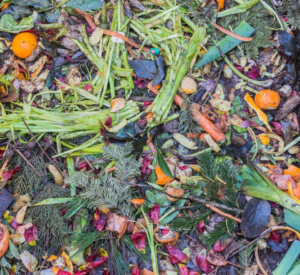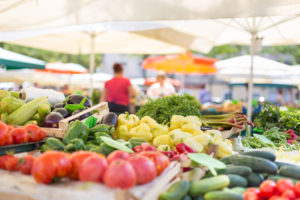June 28th was World Nature Conservation Day, so it is fitting to find ways to give back to the Earth after all it has shared with us. Here are a few tips to shift toward nature-friendly eating habits.
Tip #1: Buy Local
Shop for groceries at local stores, farmers markets, or farm stands. Buying foods that were grown close to home reduces the number of miles your food has to travel before it reaches you. Traveling fewer miles limits carbon emissions and benefits the environment.
Besides a happy planet, what’s in it for you? Produce grown and sold near you is fresher, tastes more flavorful, and can be more nutritious. Also, several stores and markets offer Virginia Fresh Match, which doubles SNAP/EBT dollars on fresh produce. If you use SNAP/EBT, check the Virginia Fresh Match website to find a participating store or market near you.
Tip #2: Choose In-Season Produce
Choose produce that is grown and harvested in season. Growing produce in its preferred climate requires less pesticide use. Also, when farmers grow warm-weather produce in the cold of winter, they may need to use large amounts of energy to keep plants warm. By growing these fruits and vegetables in summer, farmers avoid using unnecessary electricity.
Tip #3: Test out Composting
Vegetable peels, egg shells, and many other food scraps can be composted. Composting returns nutrients to the soil as food scraps break down over time. It gives plants what they need to grow and produce new flowers, fruits, and vegetables.
There are many online resources available to help you start a compost pile. Begin by picking a spot in your yard to

Composting can be as simple as creating a pile in the corner of your yard, or looking up a community composting facility near you.
pile dead leaves, produce scraps, and shredded paper. You can play a role in keeping waste out of landfills.
Tip #4: Grow a Windowsill Garden
Did you know that some greens and herbs will regrow in water? Next time you pick up a head of lettuce, cut off the bottom of the core and place it root side down in shallow water. Set it by a window and watch it sprout tiny lettuce leaves! Try this method with green onions for flavor at your fingertips. Herb stems can also be placed in a cup of water until they grow roots. If you have a garden, you can plant any of these scraps in healthy soil once they show signs of growth.
There are many ways to limit waste in the kitchen and while grocery shopping. Which of these tips will you try? Whichever you choose, nature will thank you!
By Elizabeth Uliana


